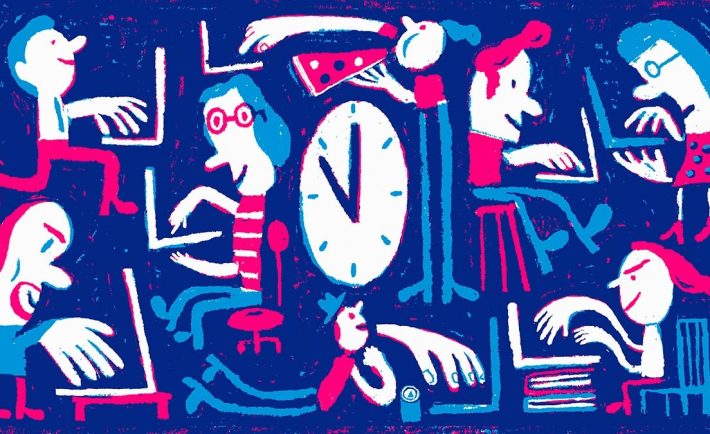
Any business owner knows how important employees are to a business. They are an essential part of any company, and most businesses would fail without them. That being said, it’s not very helpful if your employees aren’t being as productive as they could be.
When employees are more productive, your business can get things done quicker, which of course leads to a higher turnover – and a higher turnover is often the number one goal any business has. But how exactly do you make your employees more productive? Well, you need to manage their productivity. If you have no idea how to start doing this, you’ve come to the right place.
Time tracking

You can’t be looking over all of your employees’ shoulders the whole time to make sure that they are doing their job. Yet, at the same time, you can’t necessarily leave them to their own devices. While some employees will do their job even with no one checking on them, many will also take advantage of this freedom and do the bare minimum.
Luckily, there are ways of seeing how your employees spend their time. Some kinds of software will tell you how long your employees spend on certain sites or apps. You can also consider time tracking software to help when it comes to employee hours as well as other aspects of your business.
Incentives

It’s simple: happy employees are productive employees. If an employee gets rewarded for their productivity, they will have the motivation needed to be more productive. But keeping your employees happy isn’t always the easiest of tasks.
One way of doing this that has proven successful is to offer incentives. These incentives can be anything you want – from a bonus to extra leave days to gift cards. You can track your employees’ productivity and reward the most productive employees with an incentive. This is sure to get everyone working harder than before!
Be firm

Unfortunately, you need to sometimes be firm to get your employees to be more productive. You might not enjoy this, especially if your management style is on the softer side, but remember that it’s not your job to get them to like you; it’s your job to have them do their jobs properly. Of course, you should try to help them first, but if you’ve repeatedly spoken to an employee about their productivity and they still don’t make any changes, you may need to take harsher action.
Get them the right technology

While it may be easy to blame your employees for their lack of productivity, it might not always be their fault. It can be incredibly hard to be productive and get your work done if you are working with old, broken, or outdated technology. This can refer to the devices themselves or simply the software installed on them.
To boost your employees’ productivity, be sure to regularly update any software on work devices so that they don’t need to struggle just to get their work done. You may also need to replace some devices like laptops or computers if they are not working properly and slowing your employees down. Click here for some signs that you need to replace your company’s computers.
Encourage frequent breaks

It may seem counterintuitive to have your employees take breaks when you’re trying to get them to be more productive. However, taking breaks can actually increase your employees’ productivity.
You might be wondering how this works. Well, if someone works for hours on end without any break, their brains will get tired, they will work slower, and they are more likely to make mistakes. Instead of having that happen, encourage frequent but small breaks.
A quick five-minute walk is sure to have your employees feel more refreshed. You can read about how often you should take breaks while working, and then implement a system that will enable this in your business.
Get to know them

This may sound a bit far-fetched, but getting to know your employees can actually help you to create a more productive environment for them.
Some employees are most productive in a group environment, where they can work as a team or have some competition to motivate them. Others may need absolute silence to be able to concentrate on their job. Getting to know your employees will help you learn what works for them, and you can help to curate this environment. Put people who thrive off of others together in one workspace, and those who need silence in another.




